 W
WAbia sericea, common name Club Horned Sawfly or Scabious Sawfly, is a species of sawflies belonging to the family Cimbicidae.
 W
WAeshna isoceles is a small hawker dragonfly that is found in Europe, mostly around the Mediterranean, and the lowlands of North Africa. Its common name in English is green-eyed hawker. In Britain it is a rare and local species and is known as the Norfolk hawker. It has a brown colour with green eyes and clear wings and also a yellow triangular mark on the second abdominal segment which gave rise to its scientific name. It used to be in the genus Anaciaeschna as it has several differences from the other members of the genus Aeshna. Its specific name is often spelt isosceles.
 W
WBeris clavipes, the scarce orange legionnaire, is a European species of soldier fly.
 W
WBibio ferruginatus is a species of fly from the family Bibionidae.
 W
WBibio johannis is a species of fly in the family Bibionidae. It is found in the Palearctic.
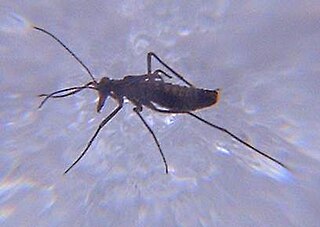 W
WBoreus hyemalis is an insect, 3 to 4.5 millimetres long from the family of Boreidae. Its common name is snow flea.
 W
WCrossocerus palmipes is a Palearctic species of solitary wasp.
 W
WCtenochares bicolorus, the black-tipped orange ichneumon is a wasp in the family Ichneumonidae. Originally from Africa, this species has spread and is considered invasive in many other parts of the world.
 W
WCyllecoris histrionius is a species of bug in Miridae family that can be found in the British Isles, Iceland, Western, Eastern, and Central Europe. and also in North Africa and east across Asia Minor to the Caucasus.The species have strikingly marked and elongated body, and have a large black pronotum that is narrowed at the front and is of yellowish-white colour. The eggs hatch in spring after they overwinter for a bit. The species hatch as bluish-green coloured larvae. Adults fly from May to July and could be found on oaks feeding on small insects such as aphids and bark flies.
 W
WElgiva cucularia is a species of fly in the family Sciomyzidae. It is found in the Palearctic . Larvae of E. cucularia are predators of aquatic, pulmonate snails in the families Lymnaeidae, Physidae, and Planorbidae.
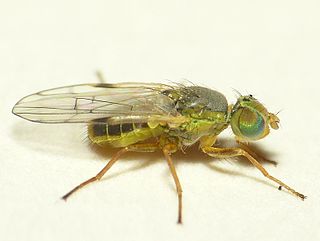 W
WEnsina sonchi is a species of fly in the family Tephritidae, the gall flies. It is found in the Palearctic. The larvae feed on the flower heads of Asteraceae . .
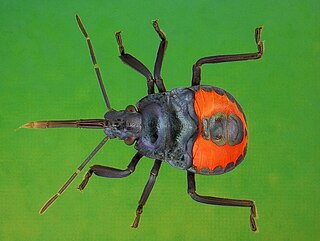 W
WEuthyrhynchus floridanus, the Florida predatory stink bug, is a species of carnivorous shield bug in the family Pentatomidae. It is native to the hottest parts of the southeastern United States and is considered beneficial because it feeds on many species of pest insects. They also feed on things such as grasshoppers and other small insects. This species also hunts in a pack, with up to twelve.
 W
WThe German cockroach is a small species of cockroach, typically about 1.1 to 1.6 cm long. In colour it varies from tan to almost black, and it has two dark, roughly parallel, streaks on the pronotum running anteroposteriorly from behind the head to the base of the wings. Although B. germanica has wings, it can barely fly, although it may glide when disturbed. Of the few species of cockroach that are domestic pests, it probably is the most widely troublesome example. It is very closely related to the Asian cockroach, and to the casual observer, the two appear nearly identical and may be mistaken for each other. However, the Asian cockroach is attracted to light and can fly like a moth, while the German cockroach cannot.
 W
WGomphocerus sibiricus is a species of insect belonging to the family Acrididae subfamily Gomphocerinae.It is found across the Palearctic east to Siberia.The main distribution area is Siberia. In Central and Southern Europe it is limited to the high mountains: Pyrenees and Sierra de Guadarrama, central and southern Apennines, Alps, Carpathians, Balkan Mountains and the Caucasus.
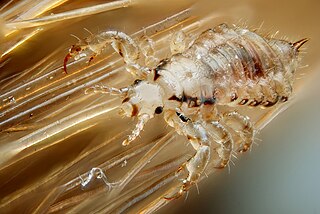 W
WThe head louse is an obligate ectoparasite of humans that causes head lice infestation.
 W
WLeptoglossus phyllopus or Eastern leaf-footed bug is a species of leaf-footed bugs in the same genus as the western conifer seed bug (L. occidentalis. The Eastern leaf-footed bug is found throughout the southern United States, from Florida to California, through Mexico, and as far south as Costa Rica.
 W
WMacrophya punctumalbum, the privet sawfly, is a sawfly.
 W
WMessor Barbarus is a species of harvester ant in the subfamily Myrmicinae. It is found In Southern Europe and Northern Africa.
 W
WMicropeza corrigiolata is a species of stilt-legged flies in the family Micropezidae.
 W
WNemotelus uliginosus, the barred snout, is a Palearctic species of soldier fly.
 W
WNomada fabriciana is a Palearctic species of nomad bee.
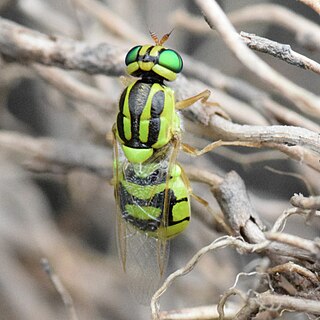 W
WOxycera trilineata, the three-lined soldier, is a Palearctic species of soldier fly. Boldly marked in yellowish-green and black, it is found in a variety of wetlands, including pools, ditches, fens and swampy river margins. It is found in North European Russia up to Leningrad; Central Asia, Siberia. Western Europe, north up to southern Sweden.
 W
WPachyprotasis rapae is a species of common sawfly in the family Tenthredinidae.
 W
WPhylus melanocephalus is a European species of plant bugs belonging to the family Miridae, subfamily Phylinae. It is a slender bug 4.5–6 millimetres (0.18–0.24 in) long and feeds on oak trees. Its colour ranges from orange to greenish-brown and its head may be pale or dark.
 W
WPlatymeris biguttatus or two-spotted assassin bug is a venomous predatory true bug of west and southwest African origin ranging in size from 10–40 mm. As a true bug of the order hemiptera, it has needle like mouth parts designed for sucking juices out of plants or other insects instead of chewing. P. biguttatus has sharp stylets in its proboscis or rostrum used to pierce the exoskeleton of its prey. Saliva is then injected into the prey which liquifies its tissues,and the rostrum is then used to suck out the digested fluids. If disturbed, it is capable of a defensive bite considered to be more painful than a bee sting. It is also known to spit venom that can cause temporary blindness in humans.
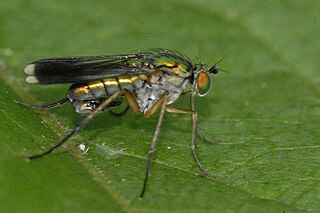 W
WPoecilobothrus nobilitatus or semaphore fly is a species of fly in the highly studied family Dolichopodidae. P. nobilitatus are popular study subjects because they are easy to recognize and are of large size. They mainly reside around ponds and wet lands, where most of their hunting and mating take place. Their mating ritual is highly studied due to their distinctive mate selection behaviors.
 W
WOne of two types of red paper wasp, Polistes carolina is a species of social wasp in the family Vespidae. They are native to the United States from Texas to Florida, north to New York, and west to Nebraska. They have also been found in Bermuda and Canada, where they are considered non-native. The wasp's common name is due to the reddish-brown color of its head and body. Red paper wasps are known to construct some of the largest nests of any wasp species and prefer to build their nests in protected spaces.
 W
WPotamanthus luteus is a species of hacklegilled burrower mayfly in the family Potamanthidae.
 W
WSapromyza quadripunctata is a species of fly in the family Lauxaniidae. It is found in the Palearctic.
 W
WSphecodes ephippius is a Palearctic species of sweat bee.
 W
WTenthredopsis nassata is a Palearctic species of sawfly.
 W
WUroleucon sonchi is a species of aphid in the family Aphididae. It is found in Europe and Australia.
 W
WXylocopa caffra is a species of Afrotropical carpenter bee that ranges from west to central and southern Africa, besides Madagascar and some Indian Ocean archipelagos.